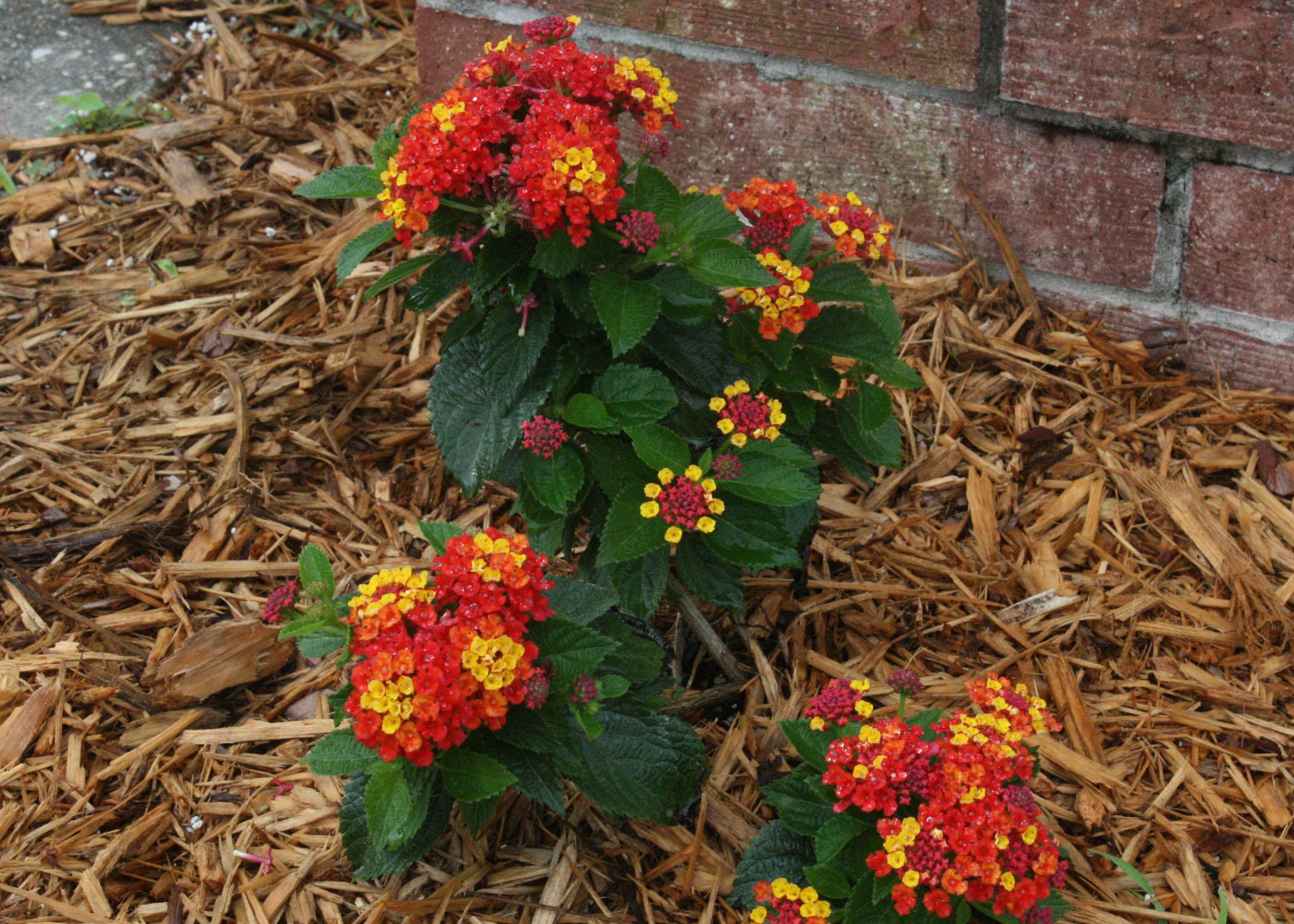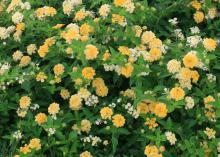Information Possibly Outdated
The information presented on this page was originally released on June 16, 2014. It may not be outdated, but please search our site for more current information. If you plan to quote or reference this information in a publication, please check with the Extension specialist or author before proceeding.
Lantana makes a big impact in the summer
Because Mississippi landscapes get so hot in the summer, one of my favorite go-to plants is the lantana. This is a great plant that thrives in the heat and humidity of summer, providing consistently bright colors and nonstop blooming through summer and into fall.
Lantana is available in a variety of sizes and colors. While many of the older lantana selections are large landscape plants, I really like the newer selections that have a smaller growth potential. Smaller plants open up an entirely new landscape option for lantana.
I also like lantanas that have a spreading growth habit. They can act as ground covers and are full of nonstop blooms. You can actually use these plants instead of flowering annuals. Once established, lantanas are reasonably drought tolerant, but you will need to water them during dry periods.
Lantana selections have been selected as Mississippi Medallion winners. New Gold lantana was one of the first of these proven landscape winners chosen in 1996. This plant is covered in bright golden-yellow flowers. It is vigorous and low growing with a dense, trailing habit that can reach 1 to 2 feet tall and spread up to 3 feet.
For the last several years, Butter Cream lantana has been a winner in my landscape. Its unique flowers start out bright golden-yellow before the flower edges turn creamy white, and then the entire flower turns white. During the summer, there is a beautiful blend of these sunny flowers on the plant. Butter Cream’s low-mounding growth is very similar to that of New Gold lantana.
Plant enthusiasts have suspected that because New Gold, Butter Cream and another lantana called Silver Mound share the exact same growth habit, they have a common ancestor. This suspicion is reinforced by the fact that Butter Cream is a natural mutation -- what is known as a sport -- of Silver Mound lantana.
If you’re already a fan of lantanas, you’ll probably be happy to learn that a new and exciting small lantana is available this year. Ally Klaire, which was developed at a Mississippi nursery, has flower clusters that start out as warm mixtures of yellow and orangey-red. As the flowers mature, they transition to possibly the reddest lantana currently available.
Ally Klaire lantanas stay a compact 2 feet by 2 feet, making them perfect for smaller spaces. And like all lantanas, the butterflies and hummingbirds just love them.
Plant lantana in full sun for best flowering performance. Make sure landscape beds are well-drained and amended with organic matter. During periods of low rainfall and high temperatures, lantana flower colors will make your landscape pop.
Lantanas are hardy to about 32 degrees and are perennial most years on the coast. A layer of pine straw added as a blanket may provide enough winter protection for them to return in north Mississippi. This year’s unusually cold winter exposed a weakness in the lantana in my landscape; it is sensitive to low temperatures when just starting to leaf out.
For those that survived the winter, cut them back hard in early spring to about 4 to 6 inches to make room for the new growth. Prune lightly through the summer to help maintain the plant’s size and tidiness and to stimulate more flowering and a bushier structure. Fertilize once a week with a water-soluble fertilizer to maintain flowering potential.









